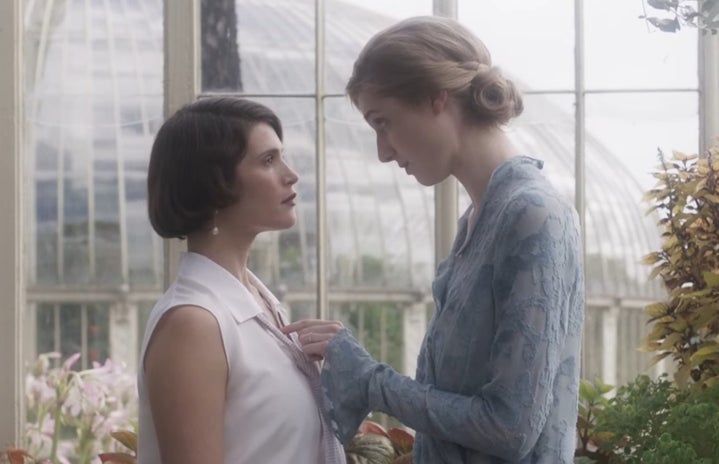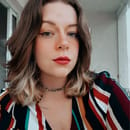“Two writers, an impossible love; Woolf and Sackville-West revolutionized the sapphic reality of the 20th century.” This is the synopsis of a romance film released in 2018. It might go unnoticed by unprepared viewers who don’t pay attention to two small details: 1. It’s a true story, and 2. It’s about the love affair between two women.
Neither of them had a conventional marriage and were part of the group of bohemian artists frowned upon by society at the time. In December 1922, Vita met Virginia Woolf at a party in London. The women immediately decided to get closer and began exchanging letters. What started as mutual admiration quickly turned into perhaps the greatest love that Woolf ever experienced.
Both were sources of immense inspiration to each other. Literary critics claim that the period in which they lived together was the best and most productive moment in both their literary careers. But more than literary success, the relationship of these two writers represents a revolution for uncontainable and passionate hearts.
Virginia Woolf
Adeline Virginia Stephen, her baptismal name, was born on January 25, 1882, in the Kensington district of London. Due to her father’s profession as a literary critic, Virginia had early exposure to the academic world. In 1912, she married the historian Leonard Woolf, from whom she inherited the surname by which she would become known.
During the interwar period, the couple spent their time hand-printing books – this activity served as a pastime for Virginia when writing became a stressful process. In 1917, they decided to create manual printers and founded their own publishing house, the Hogarth Press, which operated from their living room.
At the age of 18, Woolf began writing professionally, starting with a journalistic article. Her first novel was published several years later and was titled The Voyage (1915), based on a play she had written years earlier. From her first work, the writer went on to publish numerous novels and essays, earning the title of one of the greatest novelists of the 20th century and a leading modernist. Some of her most prominent books include Mrs. Dalloway (1925), To the Lighthouse (1927), Orlando (1928), and A Room of One’s Own (1929).
Vita Sackville-West
Victoria (Vita) Mary Sackville-West (1892-1962) was a prolific fiction writer, award-winning poet, and garden designer. She was born and raised in Knole House, Kent. She was the only daughter of Lionel Edward Sackville-West (who would later become the third Baron Sackville) and his cousin, Victoria Sackville-West.
At the age of 21, Vita married diplomat Harold Nicolson against her family’s wishes, as they disapproved of the marriage due to Nicolson’s financial situation. The couple maintained an open relationship. Their youngest son, Nigel Nicolson, also went on to become a writer.
The publication of Sackville-West’s novel The Edwardians (1930) by Virginia and Leonard Woolf’s publishing company was a resounding success, selling 30,000 copies in the first six months. Sackville-West’s narrative poem, The Land, won the Hawthornden Prize in 1927, which is the oldest British literary award. Vita became the only writer awarded the Hawthornden Prize for a second time for her Collected Poems in 1933.
In 1947, the writer was included in the Order of the Companions of Honour for her services to literature. Her weekly column in The Observer, titled In Your Garden, became a classic in the field of gardening writing. She was one of the founding members of the Knole Garden Committee. She also designed the now widely recognized Sissinghurst Castle Garden, visited by gardeners and enthusiasts from around the world.
A love story
After meeting in person at a dinner in England, Virginia and Vita decided to immediately get closer and began exchanging letters. What started as mutual admiration quickly turned into perhaps the greatest love that Woolf ever experienced. Now, the Morro Branco publishing house is releasing a new edition in Brazil of the novel featuring two of the most influential writers of the 20th century.
“Look here, Vita – throw over your man, and we’ll go to Hampton Court, and dine on the river, and walk in the garden in the moonlight, and come home late and have a bottle of wine and get drunk, and I’ll tell you all the things I have in my head – things that stay there, and never come out in the daytime. Only in the dark.”
Letter from Virginia to Vita.
The relationship between the writers had a direct impact on their works. After meeting her beloved, Sackville-West decided to publish her books through the Hogarth Press, the independent publishing house of the Woolf family. Although Virginia is much more recognized in world literature today, at the time, the works of her lover received much more praise from critics. In 1928, the writer published the classic Orlando, and the work was so personal that she sought permission from her beloved. According to The Times, Vita’s son, Nigel Nicholson, described the book as “the longest and most charming love letter in literature.”
The accounts of this passion are documented in various letters, collected in the book The 50 Greatest Love Letters of All Time.
“I am reduced to a thing that wants Virginia. I composed a beautiful letter to you in the sleepless nightmare hours of the night, and it has all gone: I just miss you, in a quite simple desperate human way. You, with all your un-dumb letters, would never write so elementary a phrase as that; perhaps you wouldn’t even feel it. And yet I believe you’ll be sensible of a little gap.”
Letter from Vita to Virginia.
The article above was edited by Clara Rocha.
Liked this type of content? Check Her Campus at Casper Libero‘s home page for more!


